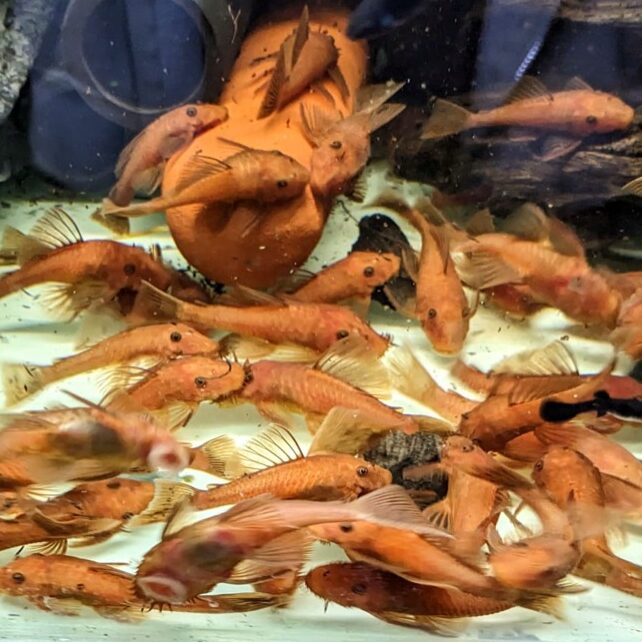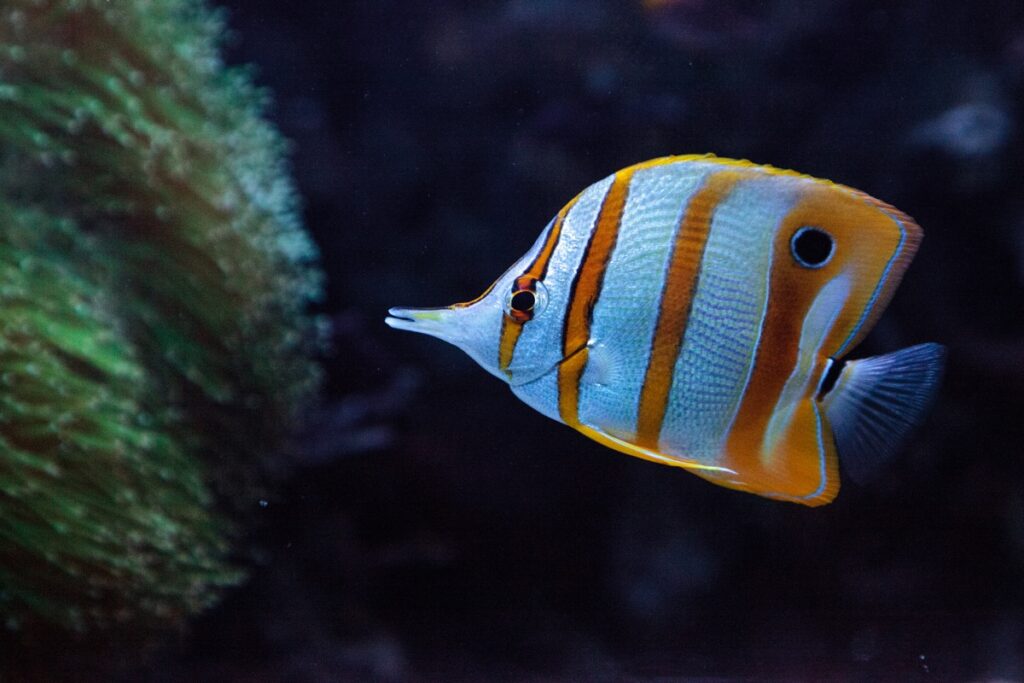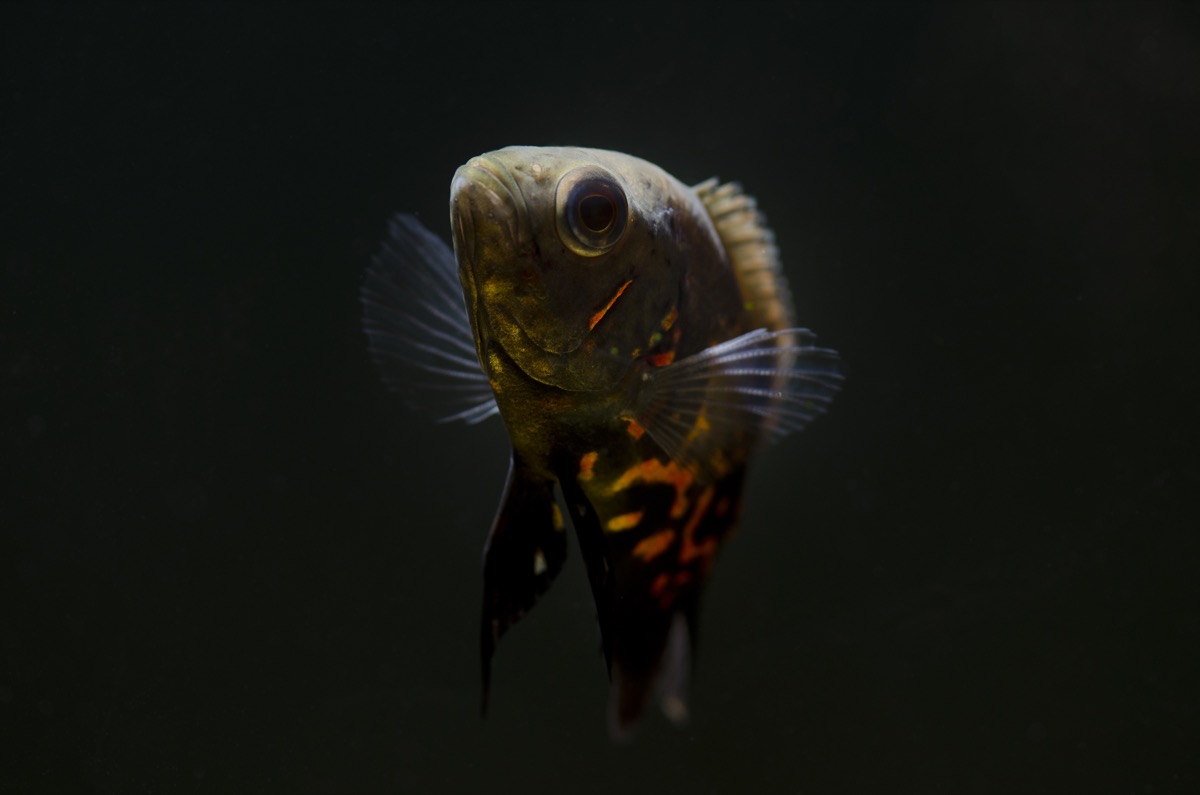Your basket is currently empty!
Description
The Tinfoil Barb (Barbonymus schwanenfeldii) is a large, active freshwater fish known for its shiny, metallic appearance and schooling behavior. Native to the rivers and streams of Southeast Asia, particularly Thailand, Malaysia, and Borneo, the Tinfoil Barb is a popular choice for aquarists with larger tanks looking for an eye-catching, energetic species. They are generally peaceful but require substantial space due to their potential size and active nature, making them more suitable for experienced fishkeepers with large aquariums.
Appearance
The Tinfoil Barb’s body has a gleaming, silver or metallic sheen with hints of gold or red, which beautifully reflects light. Their name comes from this shiny, almost foil-like quality of their scales. Adult Tinfoil Barbs typically grow between 12 and 14 inches (30–35 cm) in captivity, though they can reach up to 16 inches (40 cm) in the wild. Their fins are often tipped with vibrant red or orange, especially on the caudal (tail) fin, which features a dark black band near the end. Males and females are visually similar, though females may appear slightly rounder when mature.
Habitat and Tank Requirements
In their natural habitat, Tinfoil Barbs inhabit large, flowing rivers and streams with plenty of space to swim. Due to their large size and active nature, these fish require a spacious tank—at least 100 gallons for a group of young fish, though larger tanks (150 gallons or more) are ideal for fully grown adults. They are best kept in schools of at least 5 or more, as this reduces stress and encourages natural shoaling behavior.
Tank Setup
Substrate: A sandy or smooth gravel substrate replicates their natural habitat and reduces the risk of injury to these active swimmers.
Décor: Keep decorations minimal but provide open swimming space. Hardy plants can be added, but Tinfoil Barbs are likely to nibble on or uproot softer plants.
Water Quality: They require well-oxygenated, clean water with good filtration, as they are sensitive to poor water quality.Temperature: Between 72°F and 82°F (22°C to 28°C)
pH: Neutral to slightly acidic, around 6.0 to 7.5
Water Hardness: Soft to moderately hard water
Diet and Feeding
Tinfoil Barbs are omnivorous and have a hearty appetite. In the wild, they feed on plant matter, insects, and small invertebrates. In the aquarium, a varied diet is essential to maintain their health and vibrant colors. They accept high-quality pellets, flakes, and algae wafers as staples. Supplement their diet with fresh or blanched vegetables like spinach, zucchini, and lettuce, along with protein-rich treats such as brine shrimp, bloodworms, or tubifex worms. Feed twice a day, offering only as much as they can consume within a few minutes.
Temperament and Compatibility
Tinfoil Barbs are generally peaceful, social fish that thrive in groups, where they exhibit natural schooling behavior. Due to their size and active swimming style, they should be kept with other large, non-aggressive fish. They can coexist well with similarly sized tank mates like bala sharks, larger gouramis, and plecos. However, avoid pairing them with smaller fish, as Tinfoil Barbs may view them as food or accidentally injure them due to their size and activity level.
Lifespan and Care
With proper care, Tinfoil Barbs can live up to 10 years in captivity. Their larger size and need for spacious, well-maintained tanks make them better suited for experienced aquarists. Consistent water changes, good filtration, and regular tank maintenance are essential for their long-term health. Due to their sensitivity to poor water quality, it’s crucial to monitor water parameters closely, as fluctuations can cause stress and make them more prone to disease.
Special Considerations
Tank Size: Tinfoil Barbs require a large tank not only for space but also to support a healthy social group. A group of 5 to 6 individuals in a tank with ample swimming space is ideal.
Activity Level: Their active swimming behavior can be startling to smaller or more timid tank mates, so choose compatible fish that can handle their energy.
Environmental Enrichment: Though they are hardy fish, a well-decorated tank with open swimming spaces helps stimulate natural behavior. Avoid small or delicate decorations, as Tinfoil Barbs may accidentally damage them.
Plant Selection: Tinfoil Barbs are notorious plant-eaters, so choose hardy plants like Java fern and Anubias, which may withstand occasional nibbling. Otherwise, artificial plants or hardscape decorations may be more suitable for their tank.
Breeding
Breeding Tinfoil Barbs in captivity is challenging due to their size and the specific conditions required. They are egg-layers that spawn in rivers, which is difficult to replicate in a home aquarium. Additionally, they require large amounts of space and very stable conditions. In most cases, breeding is only achieved in specialized breeding facilities with large tanks and controlled water conditions.
Final Thoughts
Tinfoil Barbs are an impressive and dynamic addition to larger aquariums, providing movement and a striking appearance with their shimmering scales and bold red fin markings. While they are hardy and adaptable, their large size and high activity levels demand a spacious tank and consistent care, making them ideal for aquarists with experience in managing larger community tanks. With the right environment, a school of Tinfoil Barbs can thrive and bring a lively presence to any large freshwater setup.
Tin Foil Barb 3-4″
The Tinfoil Barb (Barbonymus schwanenfeldii) is a large, active freshwater fish known for its shiny, metallic appearance and schooling behavior. Native to the rivers and streams of Southeast Asia, particularly Thailand, Malaysia, and Borneo, the Tinfoil Barb is a popular choice for aquarists with larger tanks looking for an eye-catching, energetic species. They are generally…











Reviews
There are no reviews yet.